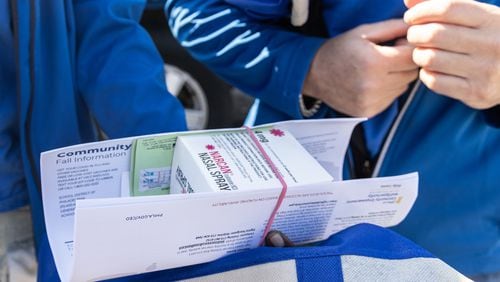Rural Americans are dying from preventable causes at a higher rate than their urban counterparts, according to a multi-year study released Tuesday by the U.S. Centers for Disease Control and Prevention.
The study set a threshold for the number of people expected to die from each cause of death in a year. Researchers classified any additional deaths of people under 80 as “early, preventable” deaths.
The study looked at early, preventable deaths from the five top causes: heart disease, cancer, unintentional injury, chronic lower respiratory disease and stroke.
Both nationally and in Georgia, health outcomes were worse for people in rural areas than in urban ones. Here’s a look at the disparities in Georgia.
Heart disease
Recent increases in preventable deaths from heart disease and stroke are likely associated with COVID-19, according to the study authors. The pandemic not only delayed and limited access to emergency care, but some symptoms of COVID-19, such as high blood pressure, could lead to increased mortality from heart disease.
Prior to the pandemic, rural areas had greater rates of preventable heart disease deaths, and the gap only widened during the pandemic. In 2022, about 56% of heart disease deaths in rural Georgia were preventable compared to 41% in urban Georgia.
Cancer
The share of cancer deaths deemed preventable by the CDC decreased nationwide and in Georgia, but at unequal rates. Preventable cancer deaths decreased 85% in urban Georgia from 2010 to 2022, while preventable cancer deaths decreased just 33% in rural Georgia over that same time period.
Researchers attributed the nationwide decline in preventable cancer deaths to increased screening for the most deadly cancers – lung, colon, cervical and breast cancer – and vaccinations against cancer-causing viruses like HPV.
Access to preventative care and early detection is not equitable across the state. Compared to Georgians in urban areas, people in rural Georgia were nearly five times as likely to die preventable early deaths due to cancer in 2022.
Unintentional injury
Unintentional injuries include drug overdoses, car crashes, drowning, falls and accidental gunshots.
Rural residents died from unintentional injuries at a rate greater than those living in an urban area, but the rates are increasing in both communities. Deaths from unintentional injuries are up nearly 60% in urban Georgia and 23% in rural Georgia compared to 2010.
The increase is likely driven by overdose deaths and, to a lesser extent, traffic fatalities, according to the study authors.
Chronic Lower Respiratory Disease
Chronic lower respiratory diseases include chronic bronchitis, emphysema and asthma.
In 2022, people in rural Georgia died premature deaths from chronic lower respiratory disease at more than twice the rate of those in urban Georgia.
Improvements in urban areas have far outpaced rural areas. Since 2010, the share of preventable deaths from chronic lower respiratory disease fell 38% in urban Georgia compared to a 2% decline in rural Georgia.
Researchers suggest that the recent sharp decline in urban areas might be due to these deaths being classified as COVID-19 deaths, which were not included in this category.
Stroke
Back in 2010, rural Georgia had the third-highest rate of preventable stroke deaths in the U.S. In 2022, rural Georgia fell to the fourteenth spot, declining about 11% in a decade.
The rate of preventable stroke deaths was nearly the same as it was in 2010 for urban Georgia.
About the Author






